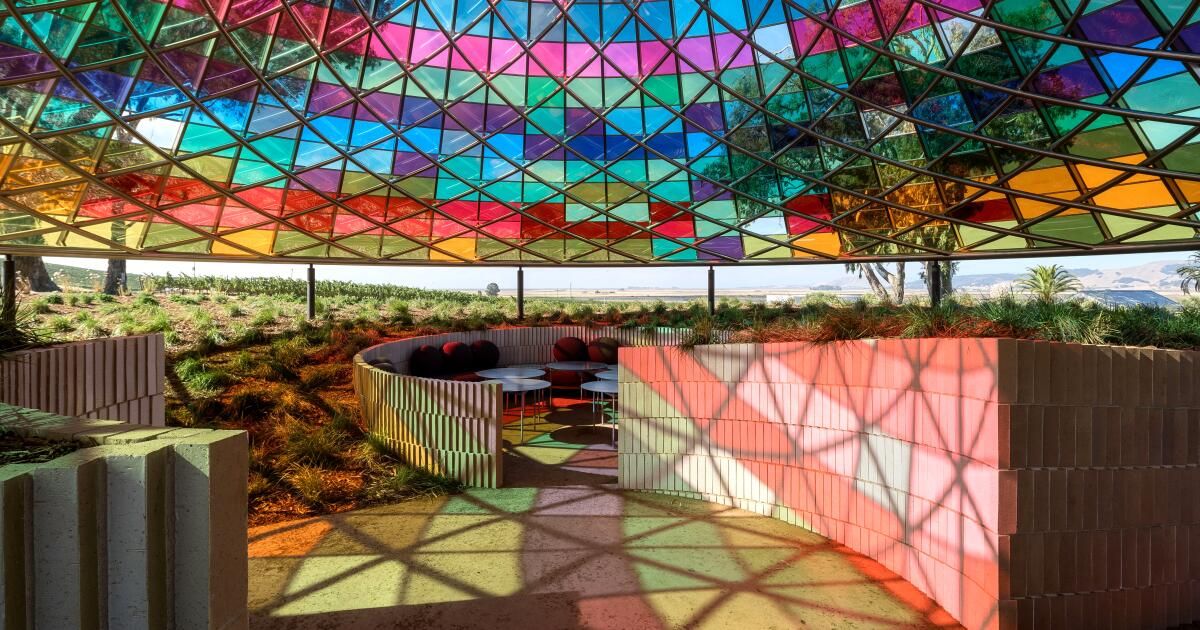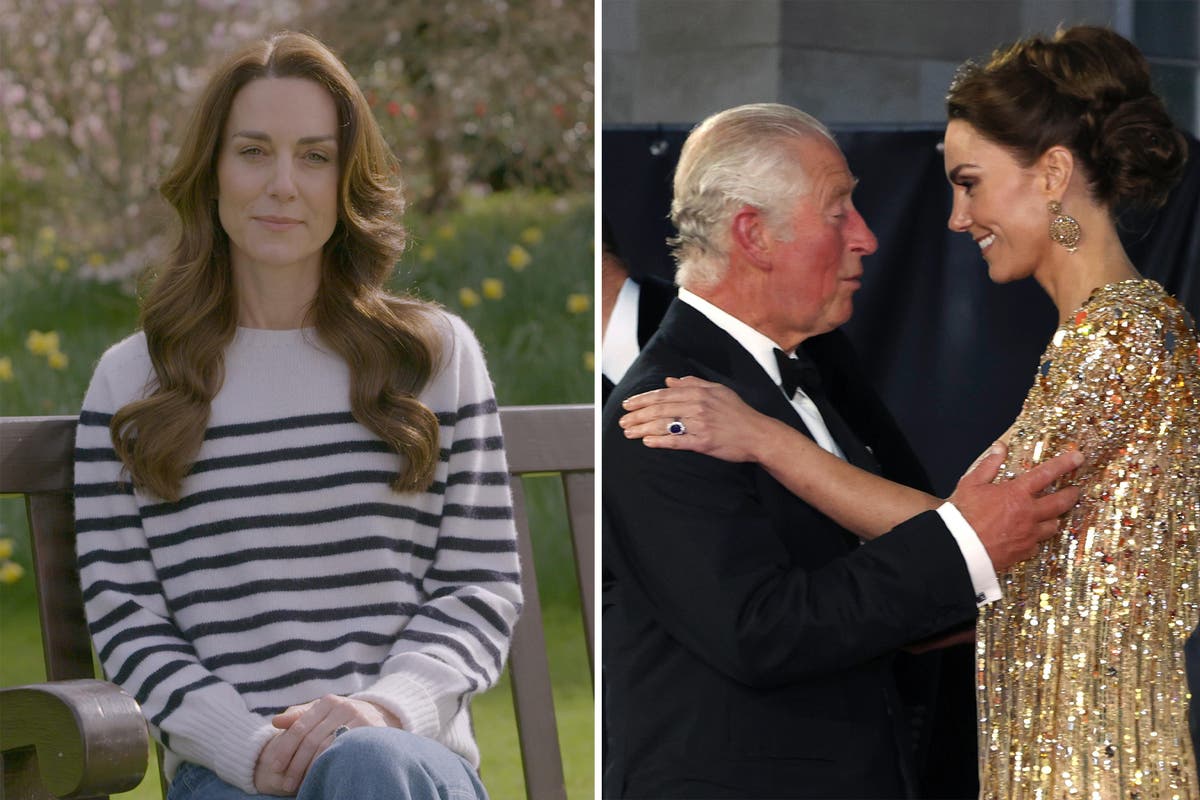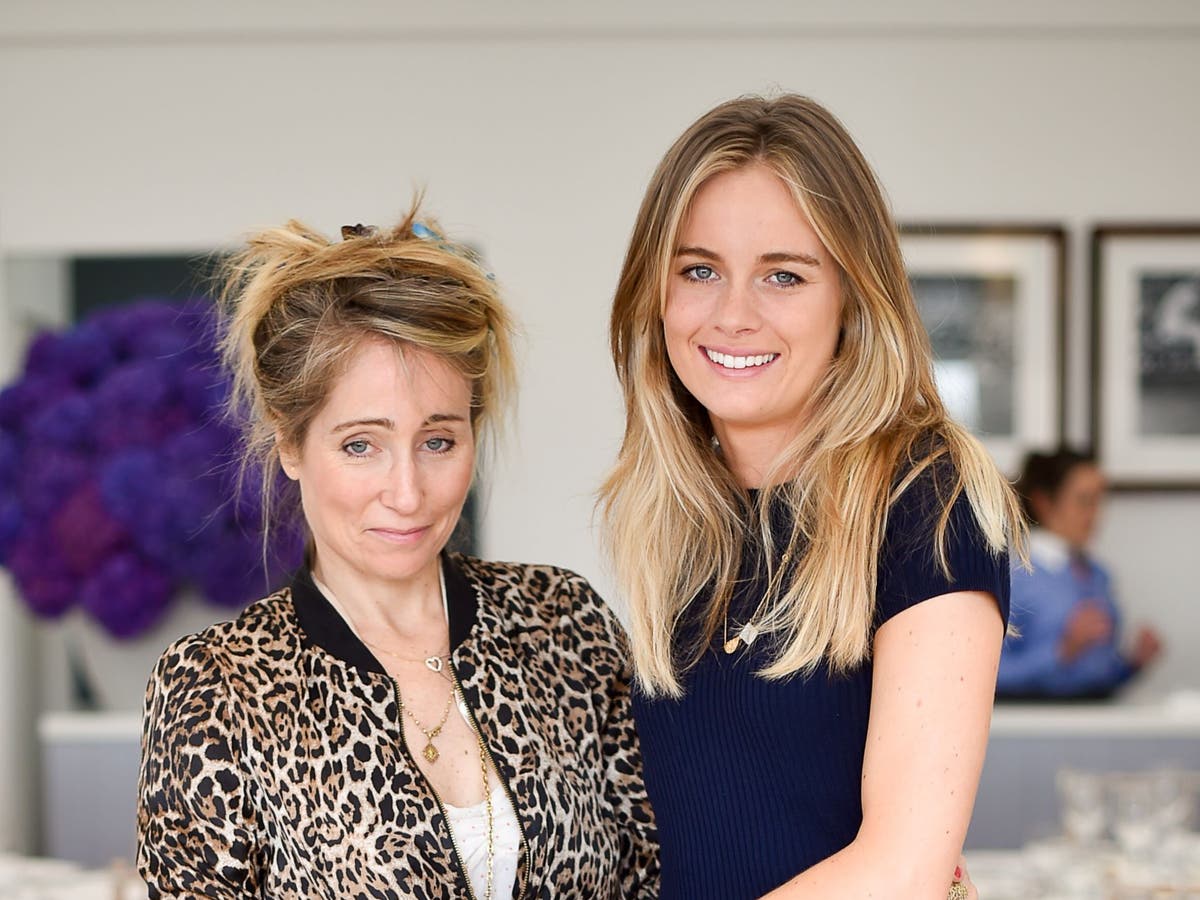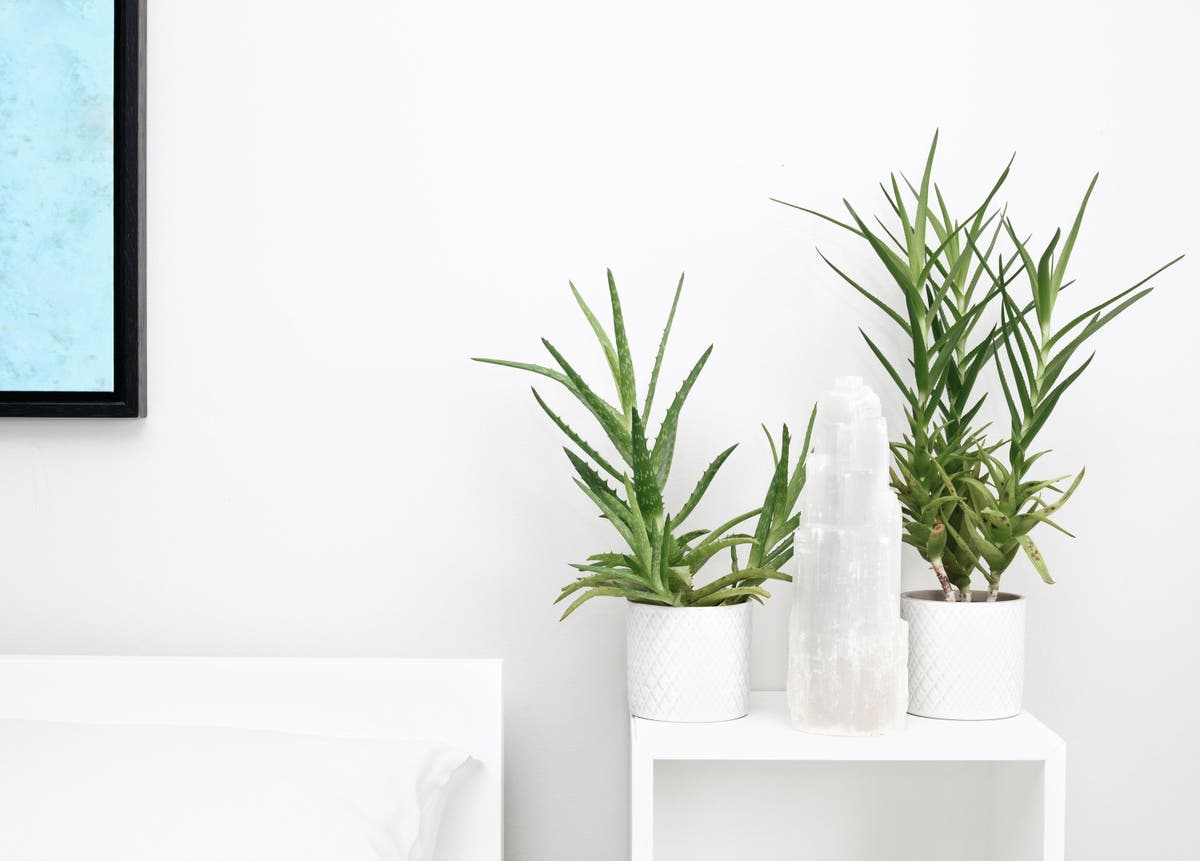Straddling Sonoma and Napa counties, the Carneros wine region, with its rolling, vine-textured hills and cool breezes winding off San Pablo Bay, boasts some of the best wineries in California. But only one greets you atop its driveway with the serene, spectral presence of a 20-foot-tall alabaster head of a young girl, “Sanna,” designed by famed Spanish artist Jaume Plensa.
Donum Estate, whose grounds display more than 60 monumental sculptures by artists such as Plensa, Louise Bourgeois, Ai Weiwei, Yayoi Kusama, Keith Haring, Doug Aitken, Robert Indian and Anselm Kiefer, to name a few, contains what is believed to be the largest private collection of sculptures of any winery in the world. Some are boldly visible. Others are hidden in groves or camouflaged among thick grass. All of them can be visited simply by making a reservation.
“People always say, 'Why haven't I heard of this before?'” said tour guide Alexandra Reif as she walked me and a friend down a narrow path near the winery entrance.
Donum (Latin for “gift”) did not begin as an artistic nirvana. First a dairy farm and then part of the historic Buena Vista winery, the property was acquired by Danish businessman Allan Warburg and three partners in 2008. In 2011, Warburg and his wife, Chinese-born art collector Mei Warburg, assumed full control of the site and began what would become an ambitious experiment/passion project.
Mei and Allen Warburg are the owners and visionaries behind Donum Estate.
(Photography by Alexander Rubin)
The couple, whose main residence is in Hong Kong, declined to be interviewed, but they always wanted art at Donum. The organization's executive director, Angélica de Vere Mabray, notes that the idea to transform the estate, which specializes in single-vineyard Pinot Noir and Chardonnay, slowly took shape. “The art was added intuitively, based on where it felt in the landscape. Over time, that spontaneity evolved into something more intentional,” he says.
The first piece the Warburgs installed, “Artificial Rock No. 126” by Zhan Wang, is a tall stainless steel replica of a China scholar's rugged rock, reflecting Mei's early interest in contemporary Chinese art. From there, they added one or two pieces a year from around the world, and that pace accelerated dramatically as their interest grew and the vision became clearer. Since De Vere Mabray's arrival in 2019, the estate has added more than 30 works and refined its art program to increasingly focus on site-specific commissions.
Nearly three dozen artists have designed works that respond directly to the conditions of the estate. Completed in 2022, Olafur Eliasson's Vertical Panorama Pavilion (created with architect Sebastian Behmann; their design firm is called Studio Other Spaces) is a circular structure topped with a conical glass canopy composed of 832 brightly colored panels, each reflecting a different environmental attribute of the region: soil conditions, sunlight, temperature, wind, humidity, and the vegetative palette of the surrounding landscape. Nearby, Yang Bao’s “Hyperspace,” a mirrored gold pyramid accompanied by shimmering shards, set in an ancient lavender field, shimmers among thyme, gingko, California poppies and native grasses, accompanied by haunting, ever-mutating music.

Yang Bao's “hyperspace.”
(The Donum Estate)
“The artists tour the property and choose their location based on how they want the piece to live on the land,” says De Vere Mabray.
Probably the most popular (and most Instagrammed) piece on the property is Richard Hudson's “Love Me,” a large, steel-clad heart-shaped sculpture with exaggeratedly curved mirrors perched atop a distant hill. The most recent addition to the property (installed this year), accessed via a winding path through thick pastures, is “Oracle” (2021) by Sanford Biggers, which fuses African and European masks, busts, and figures. Aitken's “Sonic Mountain (Sonoma)” is embedded in a deep eucalyptus forest at the far end of the property. It consists of 365 stainless steel bells, suspended from a circular canopy, each tuned to catch the wind and produce a gentle harmony.

“Love Me” by Richard Hudson.
(Robert Berg / The Donum Estate)
Local landscape architecture firm Arterra, which came on board in 2022 for “Hyperspace,” continues to work with Donum’s artists, owners and vineyard team to shape the experience, taking a cue from the existing landscape.
“It's about letting the art breathe and feel like it's always belonged here,” says Gretchen Whittier, a partner at Arterra.
That changing scenery creates often surprising variations in feel and perspective, enabled by diverse vegetation, rolling hills, a long pond, deep groves of trees and, of course, thick rows of vines. “There's a moment when you turn a corner and suddenly this monumental work appears,” says De Vere Mabray.
Visits are by appointment only and experiences are personalized. For $250, guests can tour the 200-acre estate on a guided ATV, followed by wine and small plates. For $100, they can enjoy a wine tasting and a guided walking art tour. (With canapés, it costs $150). A self-guided art tour priced at $50 allows you to experience the collection without a wine tasting. Donum's information brochures and website provide labeled maps and detailed descriptions of each work of art.

Angelica de Vere Mabray is the CEO of Donum Estate, located in the Carneros wine region between Napa and Sonoma counties.
(Photograph by Greg Gorman)
Donum, says De Vere Mabray, goes out of its way to avoid the grit and privileged vibe of many museums and art parks. Since this is first and foremost a hospitality space, he notes, “they don't tell you how long you should look or how to feel.”
“The art is serious, but also accessible. You can walk up to it, touch it, sit under it. It's part of the land,” Whittier says.
The estate's minimalist welcoming space and tasting rooms, a complex known as Donum Home (as well as the production facility, located in the footprint of the estate's former dairy barn), fade into the landscape, taking on the simple, abstract forms of farm buildings. Both were designed by Bay Area architect Matt Hollis.
Despite its millions of dollars of artwork, Donum is fundamentally a working vineyard and farm. Half of its 200 acres are planted with grapes and the rest is devoted to gardens, orchards and farmland (Donum maintains additional vineyards in Russian River, Anderson Valley and the Sonoma Coast). Donkeys, including a pair, Clyde and Opal, patrol the vineyards to defend against coyotes, while chickens and sheep roam between the rows, and hawks and owls are bred to deter rodents. Donum is one of the few wineries in California that is certified regenerative organic, which means their employees pay close attention to soil health and having a wide variety of healthy plants and animals.

“Sanna”, by the sculptor Jaume Plensa, 2015.
(The Donum Estate)
The Warburgs still select each piece, De Vere Mabray says, based primarily on instinct. The process makes the collection seem a little inconsistent (particularly the pieces that are not site-specific), but also personal and peculiarly surprising.
Donum is not the only winery in the region that includes contemporary art. In Napa, Hess Persson Estates exhibits works by several leading artists in its gallery. Hall Wines in St. Helena hosts art installations near its architect-designed tasting spaces. Paradise Ridge Winery in Santa Rosa features sculptural works in its gardens. And Louis M. Martini of St. Helena commissions contemporary works inspired by winemaking in his tasting room.
But these places more or less treat their works of art as accents of the wine tasting experience. At Donum, wine, art and landscape feel calibrated together; They exist in more equitable conditions.
“Our mission is to weave art harmoniously throughout the landscape,” the Warburgs summarized in an email.
Adds Reif, our tour guide: “Out here, it's just you, the vines, the sky and the art. Nothing comes between you and the feeling.”












